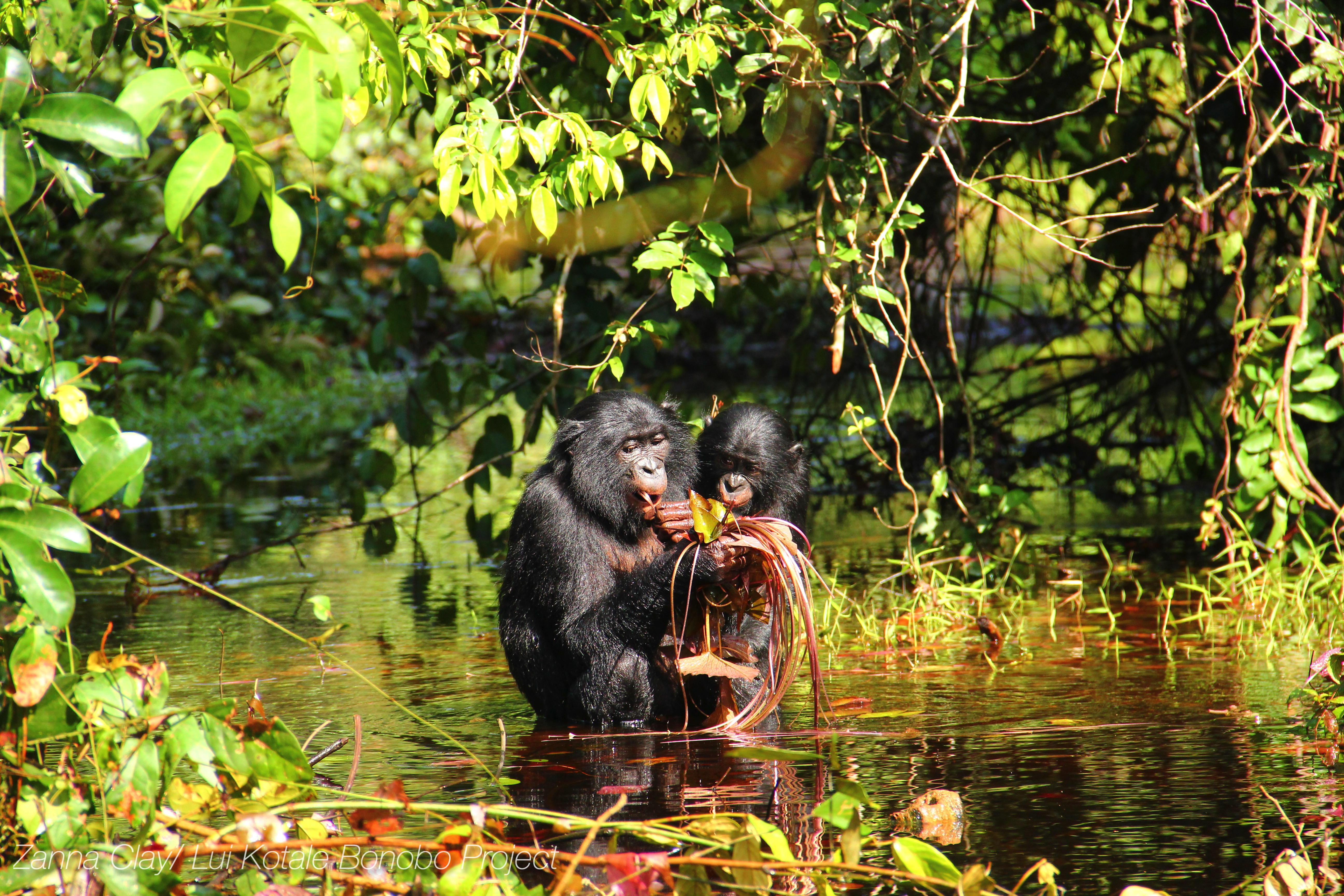Bonobo communication offers a fascinating glimpse into the ability of our closest relatives to convey complex social messages. Recent research highlights their vocalizations as highly sophisticated, resembling the foundational elements of human language evolution. These vocal patterns, indicative of compositionality in animals, suggest that bonobos may combine sounds to formulate meanings similar to word compounds in human interactions. Understanding how bonobos communicate not only sheds light on their intricate social structures but also enhances our grasp of animal communication as a whole. This evidence points to a deeper connection between the evolution of language and the social behaviors observed in both bonobos and humans.
The intriguing world of bonobo vocalizations reveals the nuanced ways in which these primates interact and convey information. These intelligent animals demonstrate a remarkable capacity for animal communication, utilizing a range of sounds that indicate different emotions and social contexts. By examining bonobo social dynamics, we can draw parallels to the evolution of language itself, showcasing how complex social structures foster advanced communicative behaviors. Such findings invite us to reconsider the development of language in the animal kingdom, encouraging deeper insights into how non-human species navigate their social landscapes.
The Fascinating World of Bonobo Vocalizations
Bonobos possess a remarkable array of vocalizations that closely mirror human language structures. Recent research indicates that these primates utilize a combination of sounds that serve different purposes, akin to how humans construct phrases. For instance, a bonobo may combine a whistle with a peep to signal varying social situations or to coordinate group movement over long distances. Their communication relies not just on isolated calls but on sequences that create meaning, demonstrating an early form of compositionality that parallels language evolution in humans.
This intricate vocal repertoire signifies that bonobos, like humans, are capable of more than basic signaling; they convey complex emotional states and social cues. The combination of vocalizations allows them to express nuanced messages. For example, sounds that indicate excitement or fear contribute to the group’s understanding of the environment, showcasing how their social structures are reflected in their communication methods. This ability to convey a range of meanings underscores the sophistication behind bonobo vocalizations and highlights the evolutionary connection between animal communication and human language.
Animal Communication and Its Evolutionary Significance
Animal communication has long fascinated researchers, offering insights into the evolution of language among species. The study of bonobo communication exemplifies how intricate social dynamics necessitate sophisticated communication methods. Just as humans have developed complex languages to describe their environments and emotions, bonobos employ their vocalizations to navigate their social structures. Their ability to mix different sounds to create meaningful phrases suggests that the roots of language evolution extend beyond humans and are present in our closest relatives.
By documenting how bonobos interact vocally, scientists are piecing together a narrative of language evolution that includes other species. This research indicates that as social structures become more complex, so too does the communication need. The parallels between bonobo vocalizations and human speech suggest a shared evolutionary heritage that combines both social and linguistic development. Thus, studying animal communication not only sheds light on bonobo behavior but also aids our understanding of how language evolves over time across different species.
Compositionality in Animal Communication
Compositionality, the principle that components can be combined to convey new meanings, plays a crucial role in both human and bonobo communication. The newly devised dictionary of bonobo vocalizations illustrates this phenomenon, revealing how different calls blend to form intricate social messages. Researchers have identified that just like humans create phrases, bonobos have a systematic way of forming combinations of vocal sounds that reflect complex social situations and emotions.
This phenomenon raises questions about the evolutionary implications of compositionality in animal communication. If bonobos can use a limited set of sounds to express varied meanings, it suggests that the capacity for language-like structures may not be unique to humans. As bonobos exhibit significant social bonding and elaborate interactions, the evolution of such compositionality in other species may highlight a shared cognitive capability that developed to strengthen social ties and enhance survival.
Bonobo Social Structures and Their Impact on Communication
The social structures of bonobos play a pivotal role in shaping their communication styles. In their multi-layered societies, bonobos often engage in complex group dynamics that necessitate regular vocal interactions. This complexity is mirrored in their vocal communication, which allows them to maintain relationships and coordinate movements within their groups. The sophisticated communication displayed by bonobos suggests that social intricacy directly influences the evolution of their vocalizations.
Moreover, as bonobos frequently split their groups into smaller units and later reunite, their vocalizations serve as an essential tool for maintaining group cohesion. This ability to signal across distances using distinct vocal cues illustrates how communication evolves to meet the needs of socially complex species. Understanding how bonobo social structures influence their communication can provide valuable insights into the development of social bonds and collaborative behaviors not only in primates but also in broader contexts across the animal kingdom.
Implications of Bonobo Research for Understanding Human Language
Research on bonobos offers profound implications for understanding the origins of human language. By comparing the vocal communication of bonobos to that of early humans, scientists can trace back the evolutionary pathways that led to complex language use. This exploration into bonobo vocalizations highlights the possibility that the building blocks of language may have existed in our common ancestors and were fine-tuned over millions of years.
Additionally, the representation of complex social situations through vocal combinations in bonobos suggests that language’s evolution is tied closely to social structures. As bonobos utilize their vocalizations to express emotions and coordinate social interactions, so too do humans rely on language to navigate the intricacies of social life. This shared lineage challenges the notion of language as a solely human trait and emphasizes the importance of examining our closest relatives to uncover the fundamental aspects of communication.
Bonobo Communication: Mirroring Human Speech
The similarities in bonobo and human vocalizations stand as a testament to the evolutionary links between our species. Both bonobos and humans utilize a range of sounds that form patterns and convey specific meanings. This connection implies not only a shared ancestry but also parallels in the cognitive abilities that underlie communication. Bonobos, like humans, exhibit a remarkable capacity for vocal modulations that can signal varying social scenarios, emphasizing the need for sophisticated communication in socially dynamic environments.
While their communication methods may differ in complexity and nuance, the underlying principles of vocal interaction establish a bridge between bonobo calls and human language. This mirroring of communication highlights the cognitive processes that govern language across species, suggesting that the development of sophisticated vocalization systems is a shared trait among social animals. By studying bonobo communication, we gain insights into our own linguistic structures and the social mechanisms that drive them.
The Role of Vocalization in Bonobo Social Dynamics
Vocalization is a crucial element in maintaining the social fabric of bonobo communities. Their vocal exchanges facilitate bonding and coordination, particularly when group members are isolated from one another. Bonobo vocalizations, like whistles and peeps, serve to reassure and guide individuals within the group, reinforcing social ties that are vital for survival. This social necessity for vocal communication among bonobos provides a fascinating context for understanding how social dynamics shape the evolution of communication.
As bonobos navigate complex social environments, their vocalizations become interwoven with their social interactions. The way they utilize sounds to convey emotions and establish connections illustrates the essential nature of communication in forming cohesive groups. By focusing on vocalization as a tool for social interaction, researchers can elucidate how communication not only facilitates relationships among bonobos but also represents a fundamental aspect of their social evolution.
Innovative Research Techniques in Bonobo Communication Studies
The exploration of bonobo vocalizations has benefited significantly from the application of innovative research techniques originally developed for human linguistics. By approaching bonobo communication with a framework that includes compositional analysis and contextual observation, researchers have uncovered a more nuanced understanding of their vocal behaviors. The comprehensive methodology employed in these studies enables scientists to map out the intricate web of sounds and their meanings, bridging a gap between animal communication and human language frameworks.
This analytical lens transforms how we perceive animal communication, moving beyond anecdotal observations to a more structured understanding of vocalization systems. As researchers compile data on bonobo calls and the contexts in which they are used, it allows for the tracking of shifts in communication patterns. Such methodologies pave the way for future studies not only on bonobos but on other species, making significant contributions to the field of animal communication research.
Understanding Emotional Expression Through Bonobo Calls
Emotional expression through vocalization is a vital aspect of communication in bonobos. The ability to convey feelings such as excitement, fear, or stress through specific sounds enhances social interactions within their groups. The emotional timbre and context of a call can provide others with critical information about the speaker’s internal state, fostering empathy and understanding among group members. This suggests that vocalizations are not merely functional but also carry emotional weight, a feature that enriches their social lives.
By analyzing the emotional nuances in bonobo calls, researchers gain insights into how these primates navigate social complexities. Understanding how bonobos express and respond to each other’s emotions through sound can shed light on the evolution of emotional communication in humans. It suggests a shared behavioral and emotional framework that underpins the development of both vocalizations and social bonds, signaling a deep-rooted connection in the evolution of emotional expression across species.
Frequently Asked Questions
What does bonobo communication reveal about animal communication systems?
Bonobo communication showcases the intricate vocal behavior these primates exhibit, particularly through their use of vocalizations like whistles and peeps to convey complex social situations. This suggests that bonobos share sophisticated animal communication mechanisms that might parallel aspects of human language.
How do bonobo vocalizations demonstrate compositionality in animals?
Bonobo vocalizations are characterized by combining different sounds to create meaningful phrases, much like human language. Researchers have identified specific call combinations used by bonobos, supporting the idea that compositionality—a key feature of language evolution—exists in animal communication.
What role does social structure play in bonobo communication?
The complex social structures of bonobos enhance their communication abilities, allowing them to maintain intricate social bonds. This social complexity necessitates a more sophisticated vocal communication system, whereby bonobos utilize varied vocalizations to coordinate and express social interactions.
In what ways do bonobo vocalizations differ from other animal communication?
Unlike simpler animal communication systems, bonobo vocalizations involve a high degree of complexity. Their calls are not only individual sounds but can be sequentially combined to express nuanced meanings, a level of intricacy that suggests an evolved form of animal communication similar to language.
How might bonobo communication contribute to our understanding of language evolution?
Studying bonobo communication provides insights into the roots of human language by highlighting the use of compositionality and contextual vocalizations. These findings suggest that the features of language may have evolved before humans, shared by our common ancestors with bonobos.
What are the implications of the bonobo communication research for understanding language evolution?
The findings from bonobo communication research imply that the foundations of language—such as the ability to combine sounds into meaningful sequences—are not exclusive to humans, indicating that elements of language evolution are present in other primate species.
Can bonobos use their vocalizations to express emotions?
Yes, bonobos can express various emotions through their vocalizations. Different calls, such as whistles or peeps, are associated with specific emotional states, reflecting the role of vocal communication in their social interactions.
What methodologies were used to study bonobo vocalizations?
Researchers employed rigorous observational methods to document and categorize bonobo vocalizations over an eight-month period, noting contextual features and the outcomes of calls to systematically analyze the meanings of their vocalizations.
How do bonobos coordinate movements using vocalizations?
Bonobos use specific vocalizations, like whistling, to coordinate group movements over distances. These sounds facilitate communication among members of the group, particularly when they are separated, showcasing the role of vocal communication in social cohesion.
What does the bonobo vocalization dictionary reveal about their communication?
The bonobo vocalization dictionary constructed by researchers illustrates the variety of calls and their meanings, revealing the sophisticated nature of bonobo communication and providing a framework for comparing vocal repertoires across different species.
| Key Point | Details |
|---|---|
| Vocalization in Bonobos | Bonobos communicate by vocalizing to distant group members, indicating their social interactions. |
| Complex Communication Similar to Humans | Research shows bonobos use word compounds and phrases in a manner similar to human language. |
| Compositionality in Language | Bonobo communication relies on compositionality, which is the ability to combine different sounds and meanings to convey complex ideas. |
| Research Methodology | The research documented vocal behaviors of bonobos over eight months, examining around 300 contextual features. |
| Significance of Findings | The creation of a ‘dictionary’ of bonobo vocalizations provides insights into their communication and social structures. |
| Evolutionary Perspective | Insights suggest that traits such as compositionality in language could have been inherited from a common ancestor shared with humans. |
Summary
Bonobo communication showcases remarkable complexities that mirror human linguistic traits, supporting the idea that the roots of language are deeper than previously thought. This understanding is crucial not only for comprehending bonobo social structures but also for unraveling the evolution of communication itself, highlighting our connections to these intelligent primates.



